
Introducing Digital Labels that work for visitors, and the teams who manage them
Flexible, reliable, and easy to manage, our latest product launch tackles common challenges museums face with digital object labels.

After extensive research with cultural institutions, we're launching Pladia Extend's first product: Digital Labels, a hardware-agnostic solution that solves the real challenges museums face with digital object labels and interpretation.
Pladia Extend is part of the broader Pladia platform, designed to help the cultural sector deliver exceptional visitor experiences across multiple digital endpoints. With Pladia Extend, you can manage in-gallery digital displays, kiosks, and signage from the same system that powers your mobile guide, Pladia Empower. Digital Labels are the first product in this suite, helping institutions make interpretation more accessible and scalable.
Digital Labels are an off-the-shelf solution that can be deployed in days, not months. Interested in trying them out? Request a free trial.
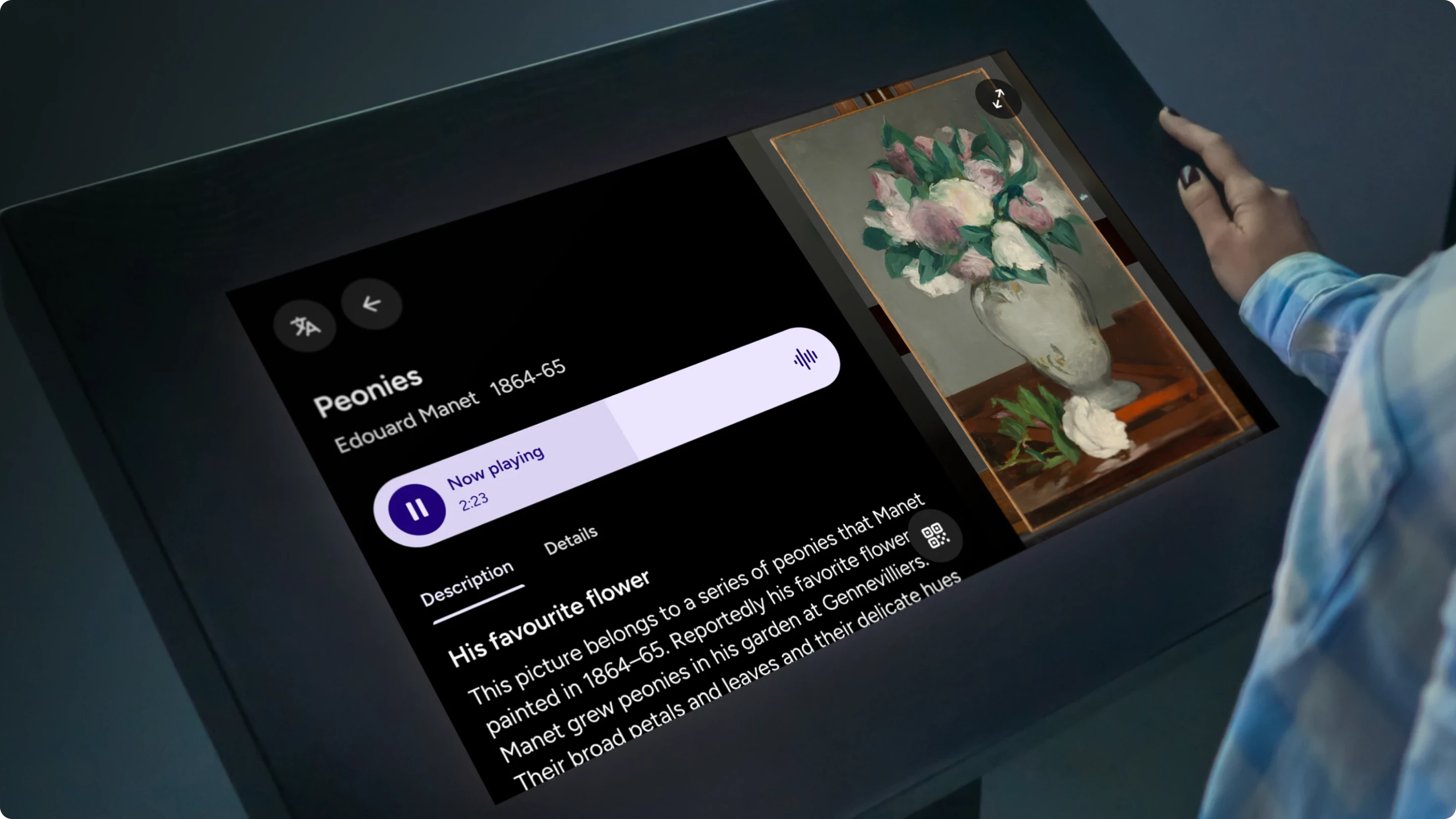
The promise of digital object labels is compelling: dynamic content, multilingual support, multimedia storytelling, and instant updates. But the reality for many museums has been far more complicated:
- Proprietary hardware limits flexibility: Many existing solutions lock institutions into specific screens or media players, making upgrades or replacements costly and complex.
- Connectivity issues frustrate visitors: Wi-Fi dropouts often lead to blank screens, disrupting visitor experiences and requiring manual resets.
- Complex management systems create bottlenecks: Many tools require technical expertise, leaving non-technical staff dependent on IT or external vendors.
- Custom builds lack scalability: Bespoke solutions may work for a single exhibit but become difficult to maintain or replicate across larger spaces.
Digital Labels are our response to these problems—built with direct input from cultural institutions to offer a better, simpler approach.
How digital labels should work
Based on our extensive research with museums worldwide, Digital Labels were designed around four core principles:
1. Works with your existing hardware
Digital Labels run in any modern browser, whether on a tablet, touchscreen display, or existing media player. This hardware-agnostic approach gives you flexibility and control, helping you avoid vendor lock-in and making it easier to scale deployments without major new investments.
2. Reliable offline performance
Connectivity issues are one of the biggest reasons digital object labels fail. Digital Labels cache content locally after the first load. If Wi-Fi drops, visitors continue exploring seamlessly. When the connection returns, content automatically syncs, with no manual intervention required.
3. Simple, unified content management
Digital Labels are managed through the same Pladia system that powers your mobile guide, Pladia Empower. Content only needs to be created once, avoiding duplicate data entry, multiple logins, or confusion about which system contains the latest version.
4. Location-based content
Each Digital Label is assigned to a specific space, automatically displaying relevant objects, descriptions, and media in context. Whether showcasing a single artifact or an entire gallery, the interface adapts dynamically without complex configuration.
5. Beyond object interpretation
Digital object labels aren’t limited to describing artifacts on display. Many institutions want their in-gallery screens to do more: sharing practical information, promoting campaigns, highlighting memberships or donation opportunities, and more. With Digital Labels, the same flexible framework lets you display real-time updates and useful visitor information alongside interpretation content. This extensibility ensures your investment in digital object labels supports the entire visitor journey and contributes to your broader organizational goals.
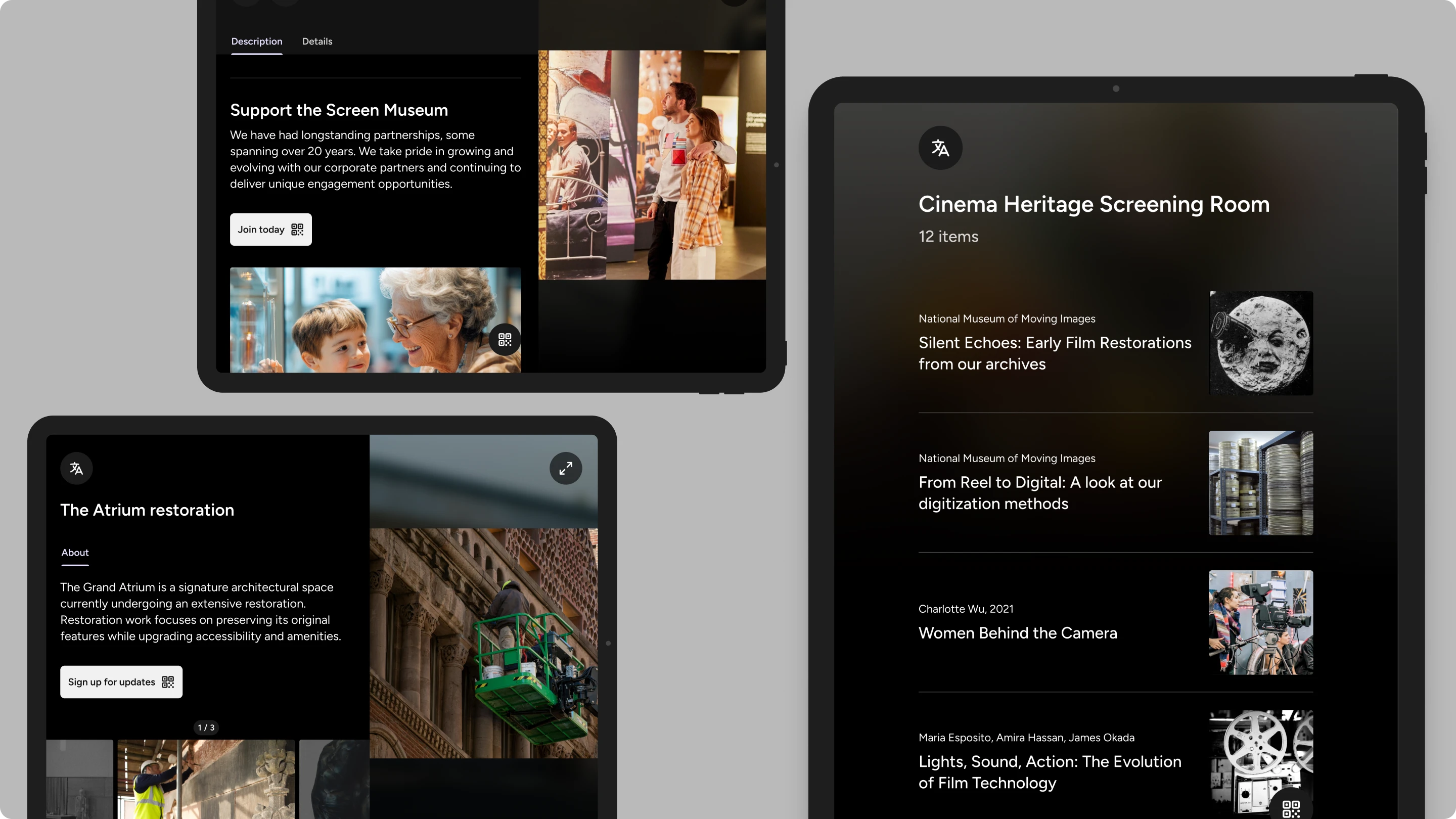
Real applications for cultural institutions
Digital Labels provide practical solutions to common challenges museums face when delivering interpretation.
1. Transform cabinet displays
Replace multiple static labels with a single digital object label. Visitors can access high-resolution images, videos, and stories without visual clutter on the display case.
2. Activate underutilized spaces
Outdoor sculptures, architectural details, or spaces lacking natural spots for printed labels can still offer rich interpretation. Digital Labels make it easy to deliver stories wherever they're needed most.
3. Showcase conservation efforts
When artifacts are being restored or on loan, Digital Labels keep visitors engaged by sharing behind-the-scenes images, curator commentary, and updates on the conservation process.
4. Improve accessibility and inclusivity
Digital object labels allow museums to support screen readers, multilingual content, and alternative formats. QR handoff to mobile empowers visitors to access additional accessibility features on their personal devices.
5. Deliver audio and video in noisy spaces
Many galleries and museums hesitate to include audio on in-gallery displays because sound can be disruptive in quiet or shared spaces. With Noisy Mode, a configurable setting in the Pladia Console, institutions can control whether a Digital Label plays audio aloud.
When Noisy Mode is disabled, audio does not play directly from the screen. Instead, visitors are prompted to scan a QR code to continue listening privately via Pladia Empower on their own device. This approach allows customers to make use of their audio and video content, prevent noise pollution, and avoid the need for installing shared headphones.
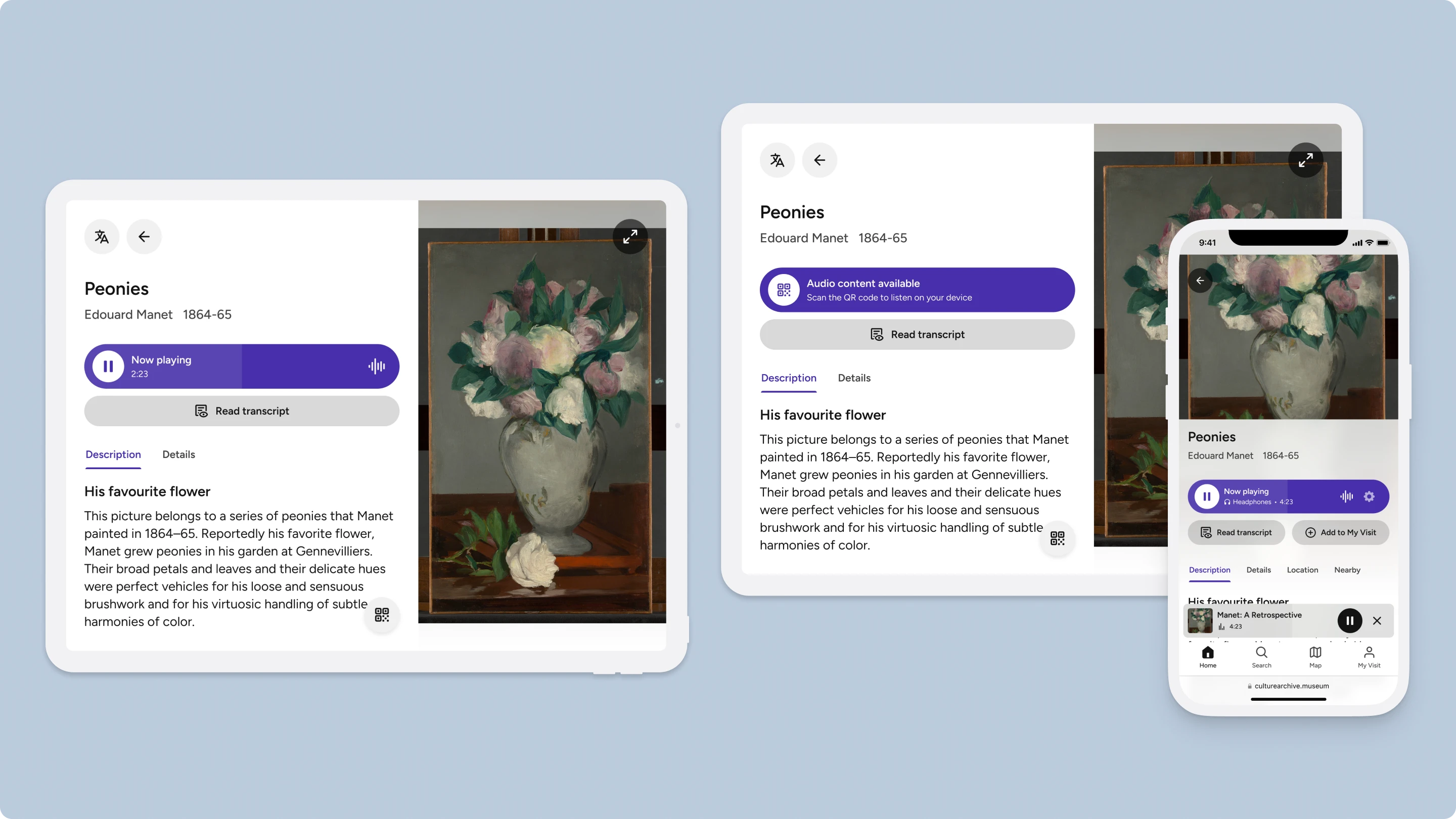
Technical foundation
Digital Labels are built as a Progressive Web App (PWA), meaning they work on any modern browser without needing separate apps or app store approval. This approach provides:
- Instant deployment across compatible devices.
- Automatic updates without manual maintenance.
- Responsive design for different screen sizes and orientations.
- Attract loop functionality, showing your branding or messages when idle.
Seamless mobile integration
Visitors can scan QR codes from each Digital Label to continue exploring on their own device via Pladia Empower. This ensures they have access to extended content, personal audio, accessibility settings, and tailored recommendations beyond the kiosk interaction.
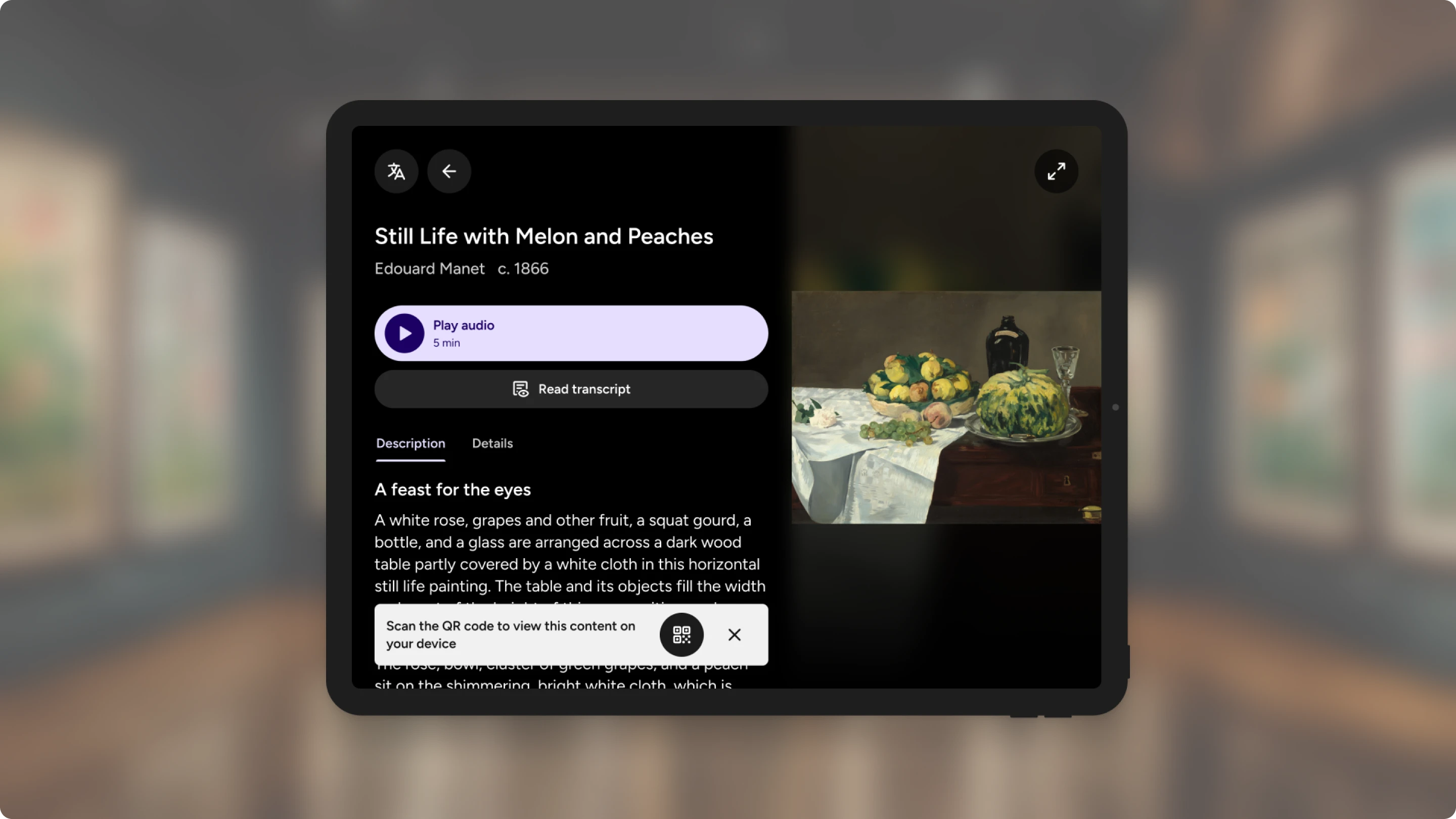
Designed for real museum workflows
Digital Labels are built to fit naturally into how museums operate:
- Separated workflows let curators and educators manage content while IT handles device setup, avoiding bottlenecks.
- A single publishing system for both mobile and in-gallery displays reduces complexity and training time.
- Scalable management works for one gallery or multiple sites.
- Analytics reveal visitor engagement patterns, helping you optimize interpretation strategies.
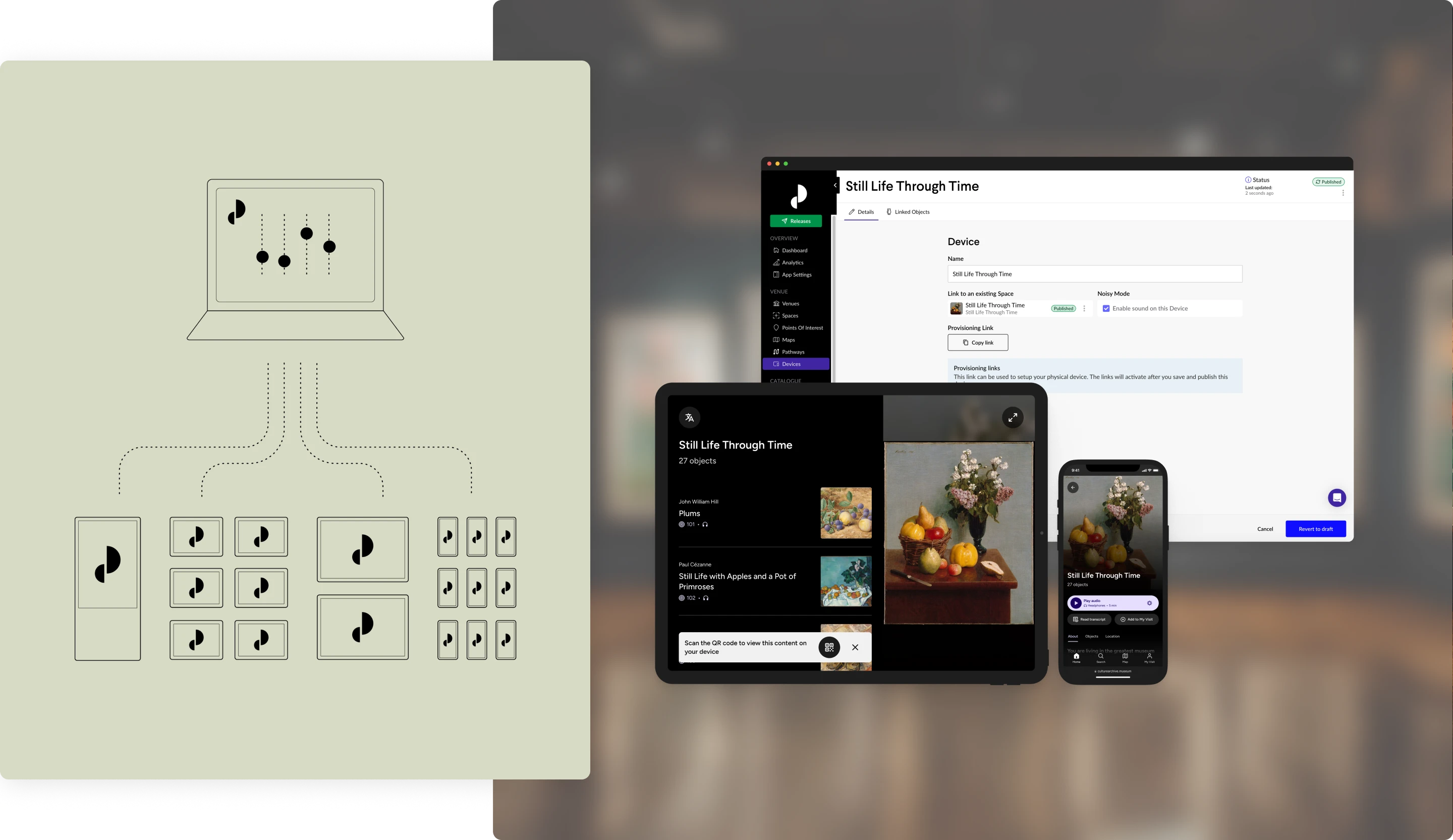
The broader Pladia Extend product line
Digital Labels are the first step in the Pladia Extend product line, which will soon include Interactive Kiosks and Digital Signage. All products are managed under the same system, meaning you can expand your digital ecosystem without adopting new tools or processes.
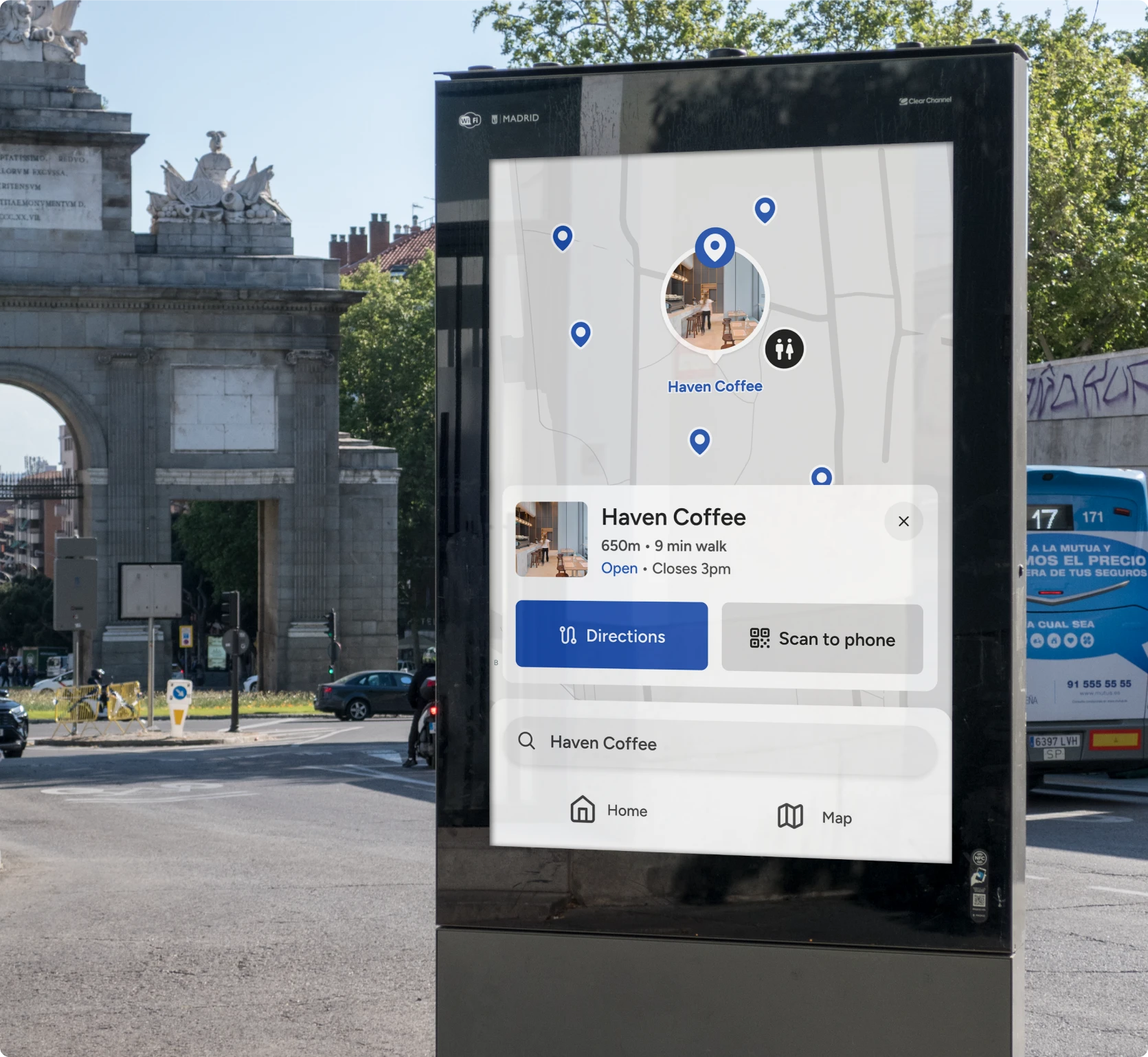
Join our Digital Labels pilot program
We're inviting a small group of partners to join our Digital Labels pilot program.
You'll work directly with our team as we test Digital Labels in real-world conditions and make refinements based on your feedback. In return, you'll receive early access, personalized support to inform your digital interpretation strategy, and a discounted license should you choose to move forward with the product.
This is a great fit for cultural institutions that:
- Want to explore digital object labels without committing to a full rollout
- Have a specific use case they'd like to test
- Are interested in shaping the next generation of interpretation tools
If you're exploring ways to deliver location-specific content to touchscreens throughout your venue, we'd love to hear from you.